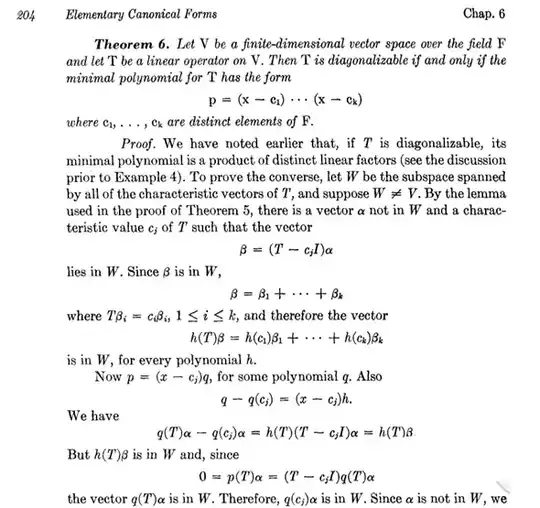While self studying Linear Algebra from Hoffman Kunze I am unable to understand some deductions in Theorem-6 on Page 204 .
$(1)$ In 7th last line from below I am not able to deduce how $q- q(c_{j})$ equals $( x-c_{j} ) h$ despite the definition of $q$ being clear to me ( It's given in line above.
$(2)$ How did in 3rd last line from below $p(T)\alpha=0$? And how does that implies the belonging of $q(T)\alpha$ in $W$? The equality of $p(T)\alpha = (T-c_{j}I ) q(T)\alpha$ is clear but I don't know how they became equal to $0$.
Kindly help.
